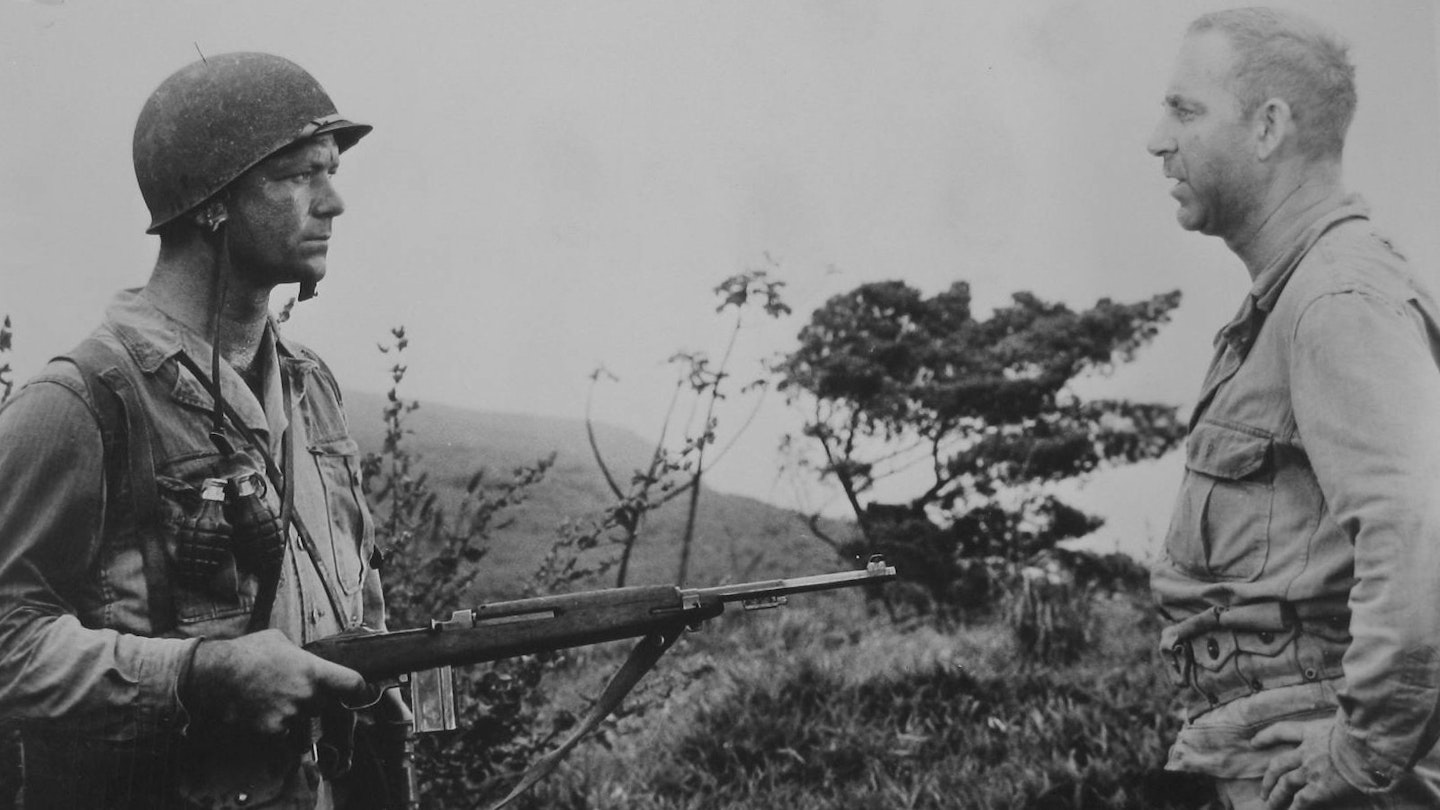Some kind of hero: Aldo Rays Sgt. Croft spits beer into bar girls faces, opens bottles with his teeth, shoots defenceless prisoners and keeps the gold hes ripped out of their mouths in a little bag around his neck. The strange thing is though, this isnt Vietnamits World War II and this is a movie made not in the 80s, but in the 50s.
The three principal characters (croft, Cummings and Hearn) in this tough and, until the tacked-on Big Ideals ending, surprisingly vicious adaptation of Norman Mailers best-selling novel. Of course, as everyone has pointed out, it is a massive simplification of that thick, complex and often very pretentious work. All the fugging foul language is gone, the ending is completely unrecognisable and none of the characters are presented with any real depth.. Aldo Ray, with his hulking frame, close-cropped bullet head and rasping voice, is born to the role of Croft and, watching the film after Platoon, he can be seen as a recognisable ancestor of that films Sgt. Barnes (the heavily scarred Tom Berenger character). Cliff Robertson (later to play no less than John F. Kennedy in PT109) brings a keen sense of college-boy integrity to his portrayal of Hearn, and Massey too, as the General, strikes a telling chord, this time of ice cold, technocratic mania.
Confidently crafted by action-movie veteran Walsh (They Died With Their Boots On, White Heat), graced with a superbly ironic score from Bernard Herrmann (Psycho, Taxi Driver) and with its attractive jungle exteriors filmed in (of all places) Panama, The Naked And The Dead is in several respects one of the key stages in the development of the American war movie. The sense of a gulf between officers and men is possibly even stronger than in such acknowledged 50s classics as From Here To Eternity or Paths Of Glory, while the instinctive brutality of Croft anticipates the continuing Vietnam movie cycle of atrocities (from Apocalypse Now to Casualties Of War and everything in between) by a good 20 years. Accept that this isnt the book, and also the direly optimistic last ten minutes, and youve got solid, visceral entertainment witha reputation which should be a lot higher than it already is.
